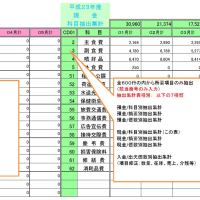[naturenews] from [nature.com]
[naturenews]
Published online 23 November 2009 | Nature | doi:10.1038/news.2009.1102
News
Diagnosing the future of genomics
Eric Green discusses his priorities as newly appointed director of the US National Human Genome Research Institute.
Erika Check Hayden
{{Eric Green is the new director of the US National Human Genome Research Institute.}
M. Bartlett, NHGRI}
On17 November, US National Institutes of Health (NIH) director Francis Collins named Eric Green as head of the National Human Genome Research Institute in Bethesda, Maryland — the post held by Collins before he became NIH director. Green talked to Nature about his plans for the institute, which has a budget of almost US$500 million.
What is your vision for the institute?
Until 2003, the institute was pretty much viewed as being synonymous with the Human Genome Project, and in that year we published a new vision for the future of genomics research — that was 'version 2.0' of the institute. If you look at the way that genomics could glue together disease-related work with clinical opportunities and new technologies, you can start to envision a 'version 3.0' for the institute that could have an even greater and broader presence in disease-related work and translational opportunities.
Given that genomics is becoming ever more relevant across all the disease-specific institutes, does there still need to be a separate genome institute?
If you look at the stimulus money that has been spent in 2009, far more money was spent by the other NIH institutes on projects such as large-scale sequencing than by our institute. We've been able to facilitate their efforts by putting the technology in place, and putting centres and programmes and expertise out there.
Much of what the institute has been about has been development: developing strategies for mapping and sequencing genomes, developing sequencing technologies, developing bioinformatic pipelines for assimilating the data, and developing policies and approaches for sharing data. That's what we need to do: we should be a developmental agency for dealing with the next frontier. It's fantastic when those pipelines and data centres end up getting used to fund new disease-specific work.
When can the public expect to see the benefits of the Human Genome Project?
There are already examples in which, for instance, analysing the sequence of genomes has led to a better understanding of the molecular basis of cancer and to specific therapies. There are going to be pharmacogenomic examples in which our knowledge of specific sequence variants can dictate exactly which drug should be given. I would be surprised if we didn't see many more examples over the next five to ten years.
What advice would you have for people who are considering buying personal genomics services from a company to find out their genetic risk for common diseases?
I haven't yet gone to get that information, because I think that the amount of information available at this time wouldn't really change anything that I am doing. A lot of what I know about my own health is based on family history — I think that understanding family history, and making sure your physician knows that, is incredibly valuable, and that's where I would put my priority at the moment. But it is a changing landscape, so I don't think any advice I would give today would be the same a year from now.
How useful are genome-wide association studies that look for genetic variations associated with particular traits or diseases?
It depends on whether you're a glass-half-full or glass-half-empty kind of person. If you've been studying a complex common disease for a decade and all of a sudden you get a clear association to a region of the genome, and you are now on the way from genotype to doing biology, that's the glass half full. Another person can say those discoveries have only accounted for 10% of the genetic risk, which leaves 90% unaccounted for. I think it means we've gotten into some successful arenas and we've got some work to do to figure out the other 90%. I don't think it's a failure; I just think it means the genomic architecture is more complicated than some people anticipated.
What would you say to those people who think that the genome institute is too focused on large sequencing centres and large projects?
I think that the large sequencing centres have been fantastically productive and have made great contributions in genomics. I think what we'll be doing in the coming months and years is not focusing on the size of our sequencing centres, but focusing on which scientific agendas are most compelling and then figuring out what needs to be done in small, medium-large, individual and core facilities.
How do you think your approach to the role will differ from that of Francis Collins when he headed the institute?
He was an awesome director and left the institute in an extremely healthy state. I think our perspectives might be slightly different, and that might refer back to our clinical training: he was trained in internal medicine and I was trained as a pathologist. His interest in genetics was getting candidate genes linked to individual diseases in human patients he saw. My interest in genomics came from running a hospital lab; I was into technology and large-scale analysis of patient material, and using that to predict aspects of patient disease.
I got more enamoured with the idea that, one day, having genomic information would guide treatment for individual patients. In the future, that might guide me more towards the diagnostic aspects of genomics in medicine. But Francis is still head of the NIH and has a lot of interest and influence on genomics across the whole agency.
[naturenews]
Published online 23 November 2009 | Nature | doi:10.1038/news.2009.1104
News
LHC sees particles circulate once more
Proton beams are zipping around the world's largest particle collider after more than a year of repairs.
Geoff Brumfiel
{{The LHC: back in business.}
CERN}
The world's largest particle accelerator is officially back in business, scientists in charge of it announced today.
Over the weekend, physicists began circulating beams of protons around the 27-kilometre ring of the Large Hadron Collider (LHC) at CERN, Europe's particle-physics laboratory near Geneva, Switzerland. The tests bring the giant machine closer than ever to high-energy collisions that physicists hope will lead to the discovery of new particles.
"The first three days of operation have been an enormous success," Steve Myers, CERN's director for accelerators, told reporters at a press conference about the status of the machine. "We've shown the LHC is in superb condition."
The restart comes after a long delay caused by a major accident. The machine had just begun circulating its first protons in September 2008 when a connection between two of its superconducting magnets failed catastrophically. Physicists took the next 14 months to make repairs and install additional safety measures around the ring of the collider (see 'How to repair the biggest science experiment in the world').
{{“We've shown the LHC is in superb condition.”}
Steve Myers
CERN}
Researchers re-injected particles late last month, but it was not until this weekend that bunches of protons were once again whizzing around the collider's entire circumference. As of today, physicists had run the beams of protons for several hours around the machine, packed them into neatly ordered pulses, and simultaneously injected two counter-rotating beams.
Scientists working on the LHC's giant detectors, which are designed to sift through the debris of particle collisions, were overjoyed. "For me it's a big emotion," said Fabiola Gianotti, spokesperson for the ATLAS collaboration. "The past year has been quite difficult."
Andrei Golutvin, spokesperson for the LHCb collaboration, proudly showed a movie of protons 'splashing' through his group's detector. "The beam conditions are excellent," he told the crowd.
But James Gillies, a CERN spokesperson, notes that the machine has yet to actually increase the energies of its proton beams. "The LHC is not yet a particle accelerator," he says.
Nor is it a collider — Gillies says that the first collisions will not come for at least ten days, giving physicists and engineers time to practise controlling the beams. If all goes well, the machine will accelerate and collide particles in December. But, says Gillies, collisions at energies that are significant enough to yield new particles won't happen until 2010.
[naturenews]
Published online 23 November 2009 | Nature | doi:10.1038/news.2009.1102
News
Diagnosing the future of genomics
Eric Green discusses his priorities as newly appointed director of the US National Human Genome Research Institute.
Erika Check Hayden
{{Eric Green is the new director of the US National Human Genome Research Institute.}
M. Bartlett, NHGRI}
On17 November, US National Institutes of Health (NIH) director Francis Collins named Eric Green as head of the National Human Genome Research Institute in Bethesda, Maryland — the post held by Collins before he became NIH director. Green talked to Nature about his plans for the institute, which has a budget of almost US$500 million.
What is your vision for the institute?
Until 2003, the institute was pretty much viewed as being synonymous with the Human Genome Project, and in that year we published a new vision for the future of genomics research — that was 'version 2.0' of the institute. If you look at the way that genomics could glue together disease-related work with clinical opportunities and new technologies, you can start to envision a 'version 3.0' for the institute that could have an even greater and broader presence in disease-related work and translational opportunities.
Given that genomics is becoming ever more relevant across all the disease-specific institutes, does there still need to be a separate genome institute?
If you look at the stimulus money that has been spent in 2009, far more money was spent by the other NIH institutes on projects such as large-scale sequencing than by our institute. We've been able to facilitate their efforts by putting the technology in place, and putting centres and programmes and expertise out there.
Much of what the institute has been about has been development: developing strategies for mapping and sequencing genomes, developing sequencing technologies, developing bioinformatic pipelines for assimilating the data, and developing policies and approaches for sharing data. That's what we need to do: we should be a developmental agency for dealing with the next frontier. It's fantastic when those pipelines and data centres end up getting used to fund new disease-specific work.
When can the public expect to see the benefits of the Human Genome Project?
There are already examples in which, for instance, analysing the sequence of genomes has led to a better understanding of the molecular basis of cancer and to specific therapies. There are going to be pharmacogenomic examples in which our knowledge of specific sequence variants can dictate exactly which drug should be given. I would be surprised if we didn't see many more examples over the next five to ten years.
What advice would you have for people who are considering buying personal genomics services from a company to find out their genetic risk for common diseases?
I haven't yet gone to get that information, because I think that the amount of information available at this time wouldn't really change anything that I am doing. A lot of what I know about my own health is based on family history — I think that understanding family history, and making sure your physician knows that, is incredibly valuable, and that's where I would put my priority at the moment. But it is a changing landscape, so I don't think any advice I would give today would be the same a year from now.
How useful are genome-wide association studies that look for genetic variations associated with particular traits or diseases?
It depends on whether you're a glass-half-full or glass-half-empty kind of person. If you've been studying a complex common disease for a decade and all of a sudden you get a clear association to a region of the genome, and you are now on the way from genotype to doing biology, that's the glass half full. Another person can say those discoveries have only accounted for 10% of the genetic risk, which leaves 90% unaccounted for. I think it means we've gotten into some successful arenas and we've got some work to do to figure out the other 90%. I don't think it's a failure; I just think it means the genomic architecture is more complicated than some people anticipated.
What would you say to those people who think that the genome institute is too focused on large sequencing centres and large projects?
I think that the large sequencing centres have been fantastically productive and have made great contributions in genomics. I think what we'll be doing in the coming months and years is not focusing on the size of our sequencing centres, but focusing on which scientific agendas are most compelling and then figuring out what needs to be done in small, medium-large, individual and core facilities.
How do you think your approach to the role will differ from that of Francis Collins when he headed the institute?
He was an awesome director and left the institute in an extremely healthy state. I think our perspectives might be slightly different, and that might refer back to our clinical training: he was trained in internal medicine and I was trained as a pathologist. His interest in genetics was getting candidate genes linked to individual diseases in human patients he saw. My interest in genomics came from running a hospital lab; I was into technology and large-scale analysis of patient material, and using that to predict aspects of patient disease.
I got more enamoured with the idea that, one day, having genomic information would guide treatment for individual patients. In the future, that might guide me more towards the diagnostic aspects of genomics in medicine. But Francis is still head of the NIH and has a lot of interest and influence on genomics across the whole agency.
[naturenews]
Published online 23 November 2009 | Nature | doi:10.1038/news.2009.1104
News
LHC sees particles circulate once more
Proton beams are zipping around the world's largest particle collider after more than a year of repairs.
Geoff Brumfiel
{{The LHC: back in business.}
CERN}
The world's largest particle accelerator is officially back in business, scientists in charge of it announced today.
Over the weekend, physicists began circulating beams of protons around the 27-kilometre ring of the Large Hadron Collider (LHC) at CERN, Europe's particle-physics laboratory near Geneva, Switzerland. The tests bring the giant machine closer than ever to high-energy collisions that physicists hope will lead to the discovery of new particles.
"The first three days of operation have been an enormous success," Steve Myers, CERN's director for accelerators, told reporters at a press conference about the status of the machine. "We've shown the LHC is in superb condition."
The restart comes after a long delay caused by a major accident. The machine had just begun circulating its first protons in September 2008 when a connection between two of its superconducting magnets failed catastrophically. Physicists took the next 14 months to make repairs and install additional safety measures around the ring of the collider (see 'How to repair the biggest science experiment in the world').
{{“We've shown the LHC is in superb condition.”}
Steve Myers
CERN}
Researchers re-injected particles late last month, but it was not until this weekend that bunches of protons were once again whizzing around the collider's entire circumference. As of today, physicists had run the beams of protons for several hours around the machine, packed them into neatly ordered pulses, and simultaneously injected two counter-rotating beams.
Scientists working on the LHC's giant detectors, which are designed to sift through the debris of particle collisions, were overjoyed. "For me it's a big emotion," said Fabiola Gianotti, spokesperson for the ATLAS collaboration. "The past year has been quite difficult."
Andrei Golutvin, spokesperson for the LHCb collaboration, proudly showed a movie of protons 'splashing' through his group's detector. "The beam conditions are excellent," he told the crowd.
But James Gillies, a CERN spokesperson, notes that the machine has yet to actually increase the energies of its proton beams. "The LHC is not yet a particle accelerator," he says.
Nor is it a collider — Gillies says that the first collisions will not come for at least ten days, giving physicists and engineers time to practise controlling the beams. If all goes well, the machine will accelerate and collide particles in December. But, says Gillies, collisions at energies that are significant enough to yield new particles won't happen until 2010.














※コメント投稿者のブログIDはブログ作成者のみに通知されます